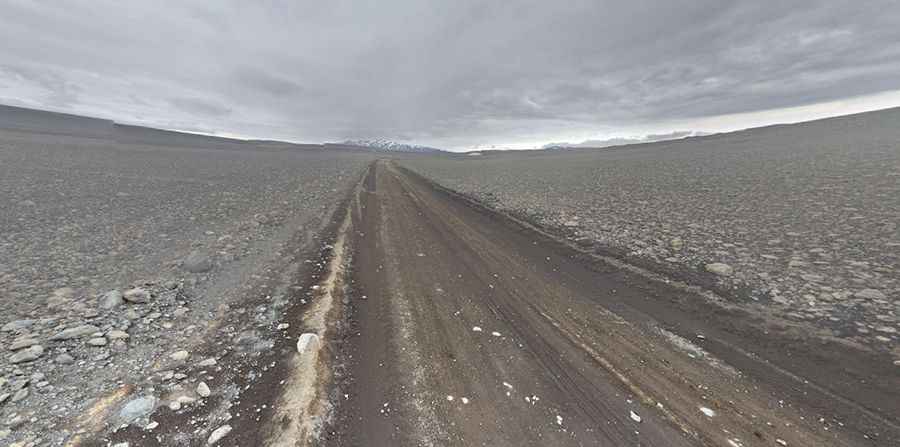Driving the wild F26 Road (Sprengisandsleið) in Iceland
F26 (Sprengisandsleið) is a highland gravel road located in the Southern Region of Iceland, featuring the most desolate terrain found in the country.

How long is the F26 Road (Sprengisandsleið) in Iceland?
The road is 232 km (144 miles) long, running through the Sprengisandur area, between the glaciers Hofsjökull and Vatnajökull. It’s said to be the longest Icelandic F-road. The F26 remains a challenging road, with unbridged rivers and stark scenery providing insight into medieval Iceland’s harsh living conditions. Sprengisandur’s southern gateway is marked by Hekla, north of which is the desolate, icy plateau between Hofsjökull and Vatnajökull.
Is the F26 Road (Sprengisandsleið) in Iceland open?
It's one of the highest roads in the country, reaching an elevation of 861m (2,824ft) above sea level. The road's opening date varies but usually falls at the end of June. The weather can affect the river conditions; rain and high temperatures can cause bigger streams, and glacial rivers swell as the day goes on. Keep an eye on the weather for thunderstorms and lightning.
Is the F26 Road (Sprengisandsleið) in Iceland difficult?
It’s one of the famous F Roads of the country. Driving F26 is a huge adventure. You will have to cross several unbridged rivers with water as deep as 1 meter approx along the route. This road is amazing by day but can be dangerous during the dark night. The road was believed to be haunted by all manner of ghosts and supernatural beings. Gas is not available on Route F26, and the gas stations at Hrauneyjar and Goðafoss are 240km (149 miles) apart. Unprepared drivers are often seen begging for fuel at Nýidalur.
Is there a river crossing on F26 Road (Sprengisandsleið)?
Roughly in the middle of the road, right next to Nýidalur hut, there's one main river crossing on F26. The river is called Hagakvislar, and it's pretty unpredictable. Usually a medium-sized crossing, it can get bigger with strong rain, and especially the current can get stronger. Crossing big rivers requires a bit of experience. Do not attempt to cross with one car, or during heavy rain. It can be treacherous if the water level rises due to lots of rain and warm weather. Try not to travel by yourself and even wait for another car to cross an unbridged river with you. This way you will be assured help if you run into trouble. Only well-equipped jeeps and larger vehicles are able to cross the rivers. Always check the river to ensure that it's not too deep. Rental car insurance does not cover damages from water, including any damage caused by crossing rivers. Be careful, if in doubt, wait for other vehicles for safety. When crossing these rivers, be sure to assess the current, depth, and the nature of the riverbed before driving in. If a river looks dangerous to cross, it probably is. Attempting to cross with more than 1 car is recommended.
Do I need a 4x4 to drive the F26 Road (Sprengisandsleið) in Iceland?
Expect large potholes, many ruts, and large boulders. The road is heavily potholed, and your vehicle will bounce, labor, and shake. With its rough surfaces and hazardous river fords, Route F26 is only for rugged 4WD vehicles with good clearance.
Is the F26 Road (Sprengisandsleið) in Iceland remote?
The journey cuts through the epic lifeless interior of the country. Expect to be alone; this track is not very busy, and very remote. Running through absolutely stunning landscapes, the drive offers stunning views. The enduring image here is of nothingness: the glaciers and mountains that fringe the horizon seem a long way off, and the space in between is filled with mile after mile of grey sand, stones, and rocks that have lain untouched for thousands of years.
Pic: Jean-Francois CULAT